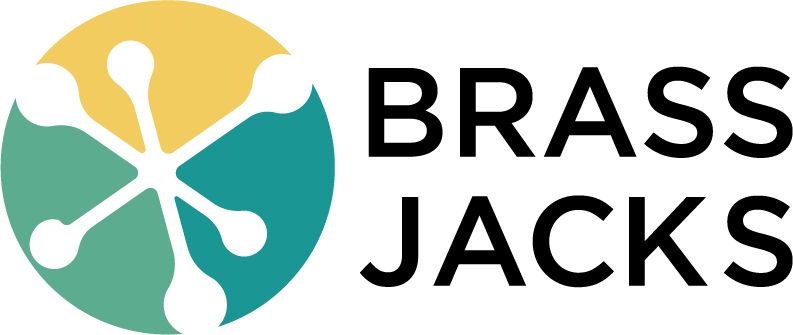
Debits and Credits in Accounting
Oct 12
/
Jackie Rockwell
Understanding Debits & Credits
The key to understanding how financial statements are impacted is understanding which accounts have a normal debit balance and which accounts have a normal credit balance. This table shows the normal balance of accounts.
Asset Account
To increase an asset, you debit the account.
Assets include bank accounts, equipment, inventory, company-owned vehicles, and loans to others. Loans to others could mean a loan to an employee or an employee payroll advance.
Fixed assets are long-term special assets that have a life of more than one year and cost $2,500 or more. They include equipment, vehicles, and leasehold improvements. The total cost of the fixed asset includes its original cost, the shipping freight, and the cost of getting it installed. For example, with a new server, you might have the expense of the IT guru coming in and setting the server up for you, which can take quite a bit of time. If you are getting a new piece of equipment for an assembly line, somebody’s probably going to have to do the installation. And you might need electricity and plumbing. All of that would be included in the cost of an asset.
When you think about fixed assets, remember, it's not just the cost of the thing. It's also the cost of getting the thing delivered and installed.
Current assets include inventory valued at less than $2,500 or small-ticket items, accounts receivable, and employee payroll advances.
Accounts receivable is what is owed to the company. Businesses can often get lines of credit through their bank backed by their accounts receivable.
Liability Accounts
To increase a liability, you credit the account.
Liabilities include loans, credit card balances, lines of credit, and accounts payable, or what is owed to vendors.
Current liabilities are those expected to be paid off in 12 months. Examples are bills, lines of credit at the bank, and credit card balances.
Long term liabilities are liabilities that will be paid off in more than 12 months. Examples are five-year car loans and the SBA loans that people got during COVID times. But what about those PPP loans some people got during COVID times? They may be forgiven, but unless and until they are, they should stay as a liability.
Income accounts
We refer to Income accounts as credit accounts, so they are increased with credits.
Income is the money earned for work produced or goods sold.
In every accounting transaction, the debits and credits must equal each other. For example, if you think about the relationship between income and accounts receivable, remember accounts receivable tracks the money that other people owe you. When you create an invoice, income is credited (increased) and accounts receivable will be debited (increased) by the same amount. So the debits and credits equal each other.
There's another income account called Other income. Other income is money received that was not a result of work performed or goods sold. Other income is shown at the bottom of the profit and loss statement after net income. Examples of other income are vendor credits. That’s when vendors give you 10% off if you pay within a certain amount of time. Other income includes rebates, which is when you buy everything through one vendor.
And then once a quarter, the vendor gives you a cash rebate.
And then once a quarter, the vendor gives you a cash rebate.
Expense accounts
To increase an expense account, you debit the account.
There are three kinds of expense accounts: cost of goods sold accounts, expense accounts, and other expense accounts. All these accounts are on the profit and loss statement along with income and other income.
Cost of goods sold accounts are the direct expense and cost of providing the work to the client. We often associate the cost of goods sold with the idea of selling products. If you had a clothing store, when you sold a shirt, the cost of that shirt would be recorded as the cost of goods sold. It's a direct expense from selling the clothing.
Just to switch things up a bit, QuickBooks Online (QBO) calls it “cost of service.” And there are costs to providing a service. For a company like Brass Jacks that provides a service, the cost of goods sold, or cost of service, is what is paid to subcontractors, direct payroll expenses, materials, forms and supplies that are purchased specifically for client projects.
Cost of goods sold can be wildly different depending on what the company does. Sometimes companies don't even use cost of goods sold. Some CPAs get really uptight about the way cost of goods sold is used. But for managerial purposes, it's beneficial to use cost of goods sold to separate out which expenses are directly related to producing income, and which expenses are considered overhead. Most expenses are similar for all industries. Overhead expenses can include accounting and legal fees, office supplies, and dues and subscriptions.
Other expenses are those not related to the normal course of business. For example, there may be items in the checking account that never cleared and have to be backed out. Or if a company allows its employees to purchase items under their wholesale agreements and then reimburse the company.
Split expenses
Another term that’s important to understand is split. It’s a transaction entry that is not always two-sided, like $100 debit and $100 credit. One example is posting a loan payment, where the interest is an expense, and the principal amount is a liability. Another example is a store purchase of $150, where you bought both office supplies for $100, and job materials for $50, using the business credit card. You would split the $100 for office supplies, and the $50 for job materials.
Understanding Debits and Credits is crucial for a bookkeeper.
Download the cheat sheet so you never mix them up again!
